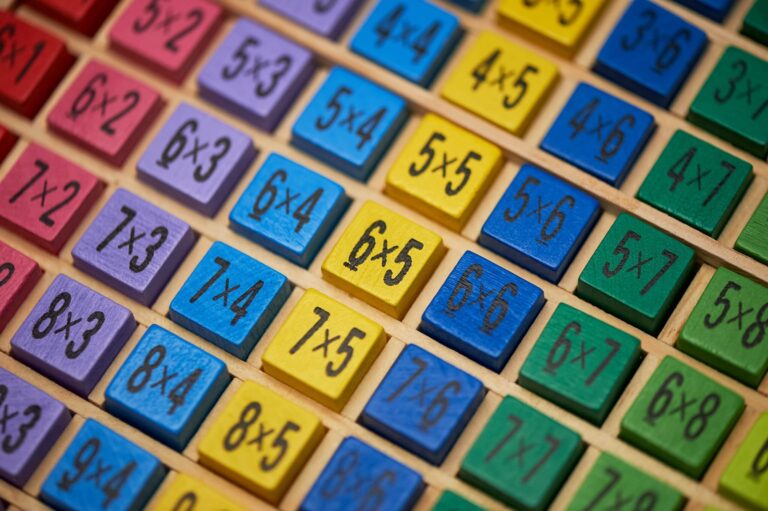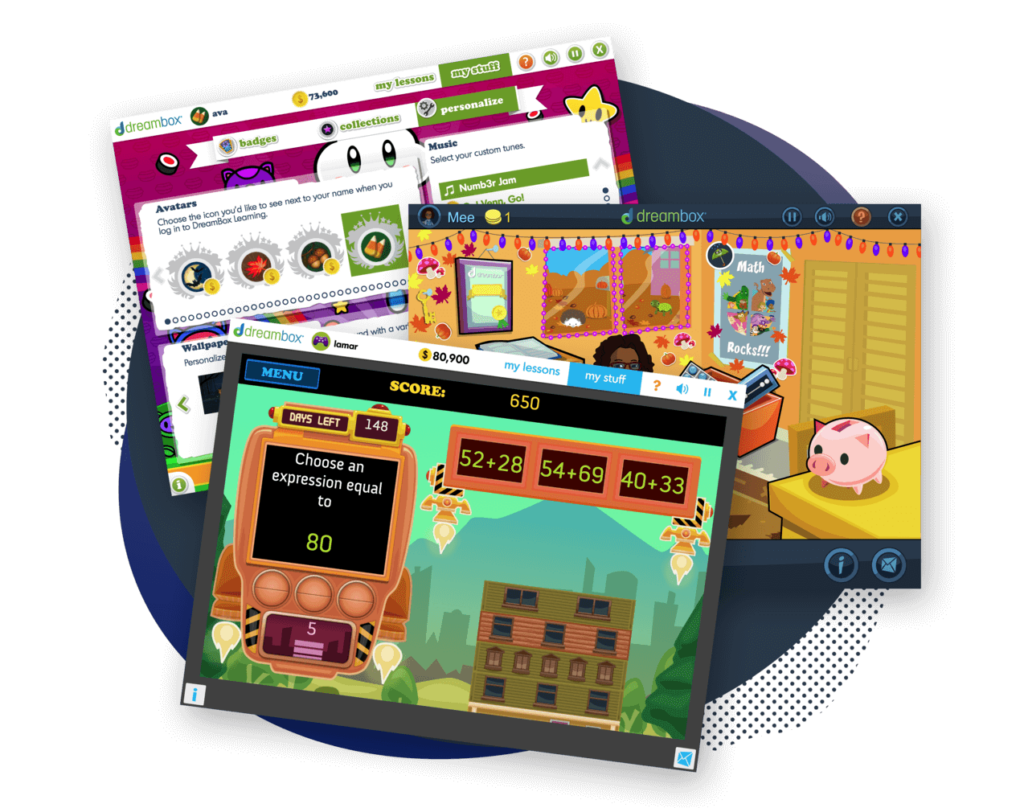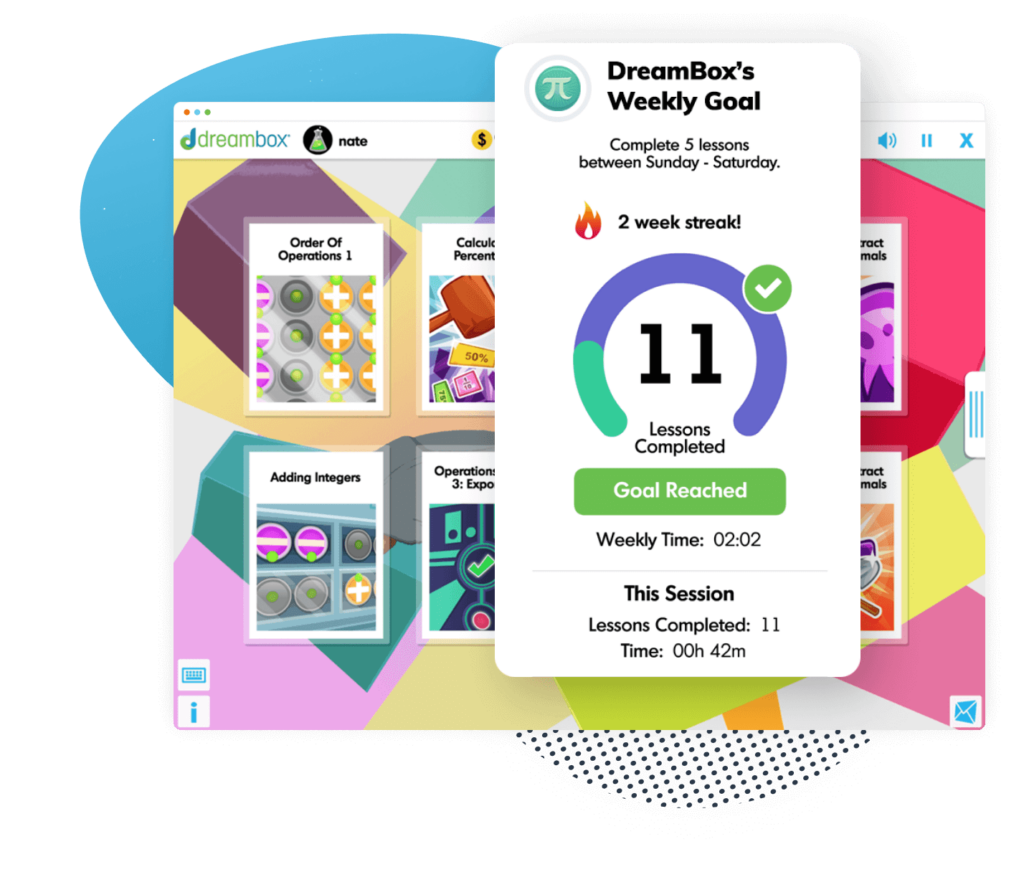How to learn your 7 times tables
Discover easy ways to tackle the tricky 7 times table, including helpful tips from an elementary ed teacher, practice problems, and a step-by-step guide for parents and kids.

Author
Michelle Griczika
Published:
Oct 2024

Key takeaways
- • Prime Difficulty: The 7 times table is tough because 7 is a prime number without easy patterns
- • Strategies for Success: Use skip counting, memorization, and practice problems to learn it effectively
- • Build a Foundation: Learn easier times tables first to better understand multiplication before moving on to the 7 times table
If your child is learning multiplication facts the 7s times table will probably be one of the last they learn. That’s because the 7s times table can be the most challenging. Why? Because 7 is a prime number. You might be thinking that 3 and 5 are also prime so why is the 7 times table more difficult? Let me explain.
A prime number is a number whose factors (the numbers being multiplied) are only itself and one. In other words, the only numbers you can multiply to get 7 are 7 and 1 or 1 and 7. The same is true for 3. Because there are less fact families for prime numbers, there are more facts to learn. By contrast, composite numbers have more factors so there are less facts to learn. Take the number 4, for example. You can multiply 2 and 2 to get 4, along with 1 and 4.
While 3 and 5 are prime numbers, the times tables for these numbers are relatively easy for students to learn because of obvious patterns in the products and quicker addition.
For the 5s times table, students know that each product (the answer to a multiplication problem) must end in 0 or 5, and this alternates back and forth throughout the times table. Even young students can learn how to count by 5s and later connect this to multiplication.
Similarly, the 3s are relatively easy to learn despite 3 being a prime number. Once students learn the connection between multiplication and repeated addition, they can easily skip count by 3s to find the desired product.
For example, a student trying to solve 3 x 4 might know 3 x 3 is 9. The student can then quickly add another “group of” 3 to 9 and see that 3 x 4 = 12. While this strategy also works with the 7s times table, adding 7 to a number is typically more difficult.
Let’s say a student is trying to figure out 7 x 5. The student might remember that 7 x 4 is 28. Then, the student can add another “group of” 7 to 28. While this will still lead to the correct answer of 35, it is usually more challenging for students to quickly add 7 to a number than it is to add 3 because it’s larger.
Introducing the 7 Times Tables
I recommend teaching other multiplication facts before teaching the 7 times table. Specifically, I would begin with the times tables that have predictable patterns and easier skip counting, such as the 2s, 5s, and 10s. Learning these times tables first helps students grasp the concept of multiplication as repeated addition more easily.
I cannot stress the importance of taking the time to ensure students have a concrete understanding of multiplication before asking them to memorize multiplication facts. Understanding multiplication as “groups of” a number allows students to find the product of an unknown multiplication problem even if they cannot recall the answer of the top of their head.
Table of contents
7 times table chart
Before diving into our tips, take a look at the 7 times table up to 10:
| 1 x 7 = 7 | 7 x 1 = 7 |
| 2 x 7 = 14 | 7 x 2 = 14 |
| 3 x 7 = 21 | 7 x 3 = 21 |
| 4 x 7 = 28 | 7 x 4 = 28 |
| 5 x 7 = 35 | 7 x 5 = 35 |
| 6 x 7 = 42 | 7 x 6 = 42 |
| 7 x 7 = 49 | 7 x 7 = 49 |
| 8 x 7 = 56 | 7 x 8 = 56 |
| 9 x 7 = 63 | 7 x 9 = 63 |
| 10 x 7 = 70 | 7 x 10 = 70 |
Turn math into playtime with DreamBox Math
DREAMBOX MATH
Get started for FREE today!

Tips for Learning Your 7 Times Tables
While students can still use manipulatives and models to find the product of any multiplication problem, there are more efficient ways for the 7s times table. The most effective method for teaching the 7 times table is to emphasize memorization of the facts while showing students how to utilize skip counting as needed.
Emphasize Commutative Property of Multiplication
Before diving into memorization strategies, remind your student of the Commutative Property of Multiplication. This multiplication property states that changing the order of the numbers being multiplied (the factors) does not change the answer (the product). Once students learn 2 x 7, they also learn 7 x 2.
The Commutative Property of Multiplication is especially helpful for learning the 7 times tables because students should also have learned several other tables by the time they know these facts. You can show your child the 7 times table chart and circle the facts they already know based on other times tables. For example, if your child has already learned the 2, 5, and 10 times tables, then you can identify 2 x 7, 7 x 2, 3 x 7, 7 x 3, 5 x 7, and 7 x 5 as facts your child already knows!
Use Skip Counting Games & Songs
Ironically, learning the 7 times tables was probably my students’ favorite simply because of this 7s skip counting song! Skip counting songs are great when teaching multiplication because they emphasize the idea of multiplication, meaning “groups of” a number; so 4 x 7 is the same as 4 “groups of” 7, and students can count by 7 four times to find the answer.
My students begged to sing this specific song every day and even wanted me to bring in our principal so they could show him and record it for our class’s Facebook page for their families!
There are plenty of skip-counting songs for each times table, but this one for the 7s was their all-time favorite. They learned the 7s facts extremely fast, probably because they always sang the song!

The math program that drives results
Get started today!
DreamBox adapts to your child’s level and learning needs, ensuring they are appropriately challenged and get confidence-building wins.
Flashcards
Sometimes you have to resort to good ole’ flashcards. While skip counting is a great strategy for solving multiplication facts your student doesn’t remember, quick recall is important when taking timed tests. I never advise starting with rote memorization but in the end, students have to memorize their facts. Flashcards have been proven to create neural pathways in the brain which makes recalling information easier and quicker. Plus, many students find the act of handwriting flashcards in and of itself helpful for memorization.
Ready to give it a go?
- Put your knowledge to the test with these no-risk practice problems to get you ready for the classroom!
Practice Problems
Click on the boxes below to see the answers!
Take at home math practice to the next level
Empowering parents and educators to make math practice more impactful. Plus, your kids will love it.


